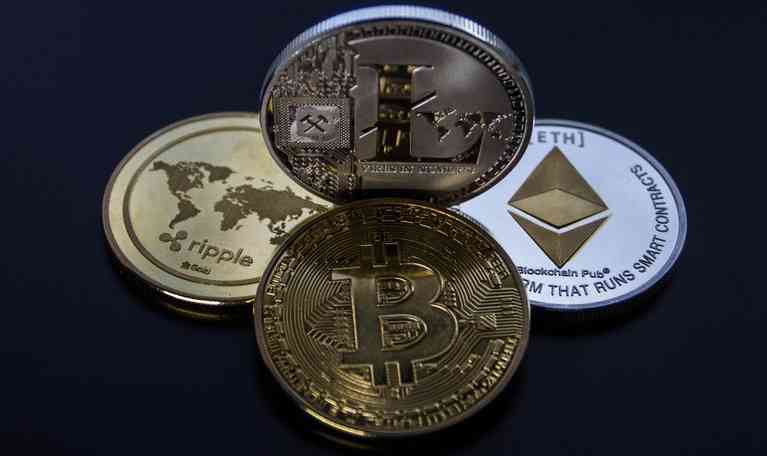Cryptocurrencies have evolved globally to where they can’t be ignored. The CBOE and CME have launched their own cryptocurrency futures, the SEC and CTFC are furiously trying to cope and every mainstream publication that matters discusses cryptocurrency. It’s a revolution that has matured enough and at least for the foreseeable future, is here to stay.

What will drive the cryptocurrency landscape in the foreseeable future? Below are four trends likely to occur over the year:
More stablecoins and increased market stability
The cryptocurrency market is fairly robust if you think about it. Whether it’s major major exchange hacks, involvement from the respective financial regulators, bans on cryptocurrency ads by Google, Facebook, Twitter and other online giants and varying and differing government intervention to administer control.
All these factors have in some way been responsible for a massive correction in cryptocurrency market cap, from a peak of over $850 billion in January to steady decline to below $250 billion (so far) but it’s not dead and gone, it’s just consolidating and stabilising.
It’s a harsh reality that most cryptocurrencies are pegged to Bitcoin’s price action. The idea behind the stablecoin is to have a coin with a fixed price that isn’t subject to sudden price swings. This “stablecoin” is then pegged to, and backed by, actual fiat currency to guarantee its stability. Tether is that coin and most exchanges now pair every major cryptocurrency and some smaller altcoins to Tether’s USDT which is equal to $1.
The simple theory being that Tether makes it more stable than pegging it to the more volatile Bitcoin. Unfortunately, due to recent investigations, it transpires that this just isn’t the case. It’s been speculated that Tethers are often printed out of thin air in response to market conditions in order to manipulate cryptocurrency prices. It’s also been alleged that about 49% of Bitcoin’s price rise occurred within hours of new Tethers being released. In laymen’s terms, there is a valid case to suggest that Tether has been released severally in order to manipulate Bitcoin, and consequently other cryptocurrency prices.
The problem lies in Tether being the major stablecoin cryptocurrencies are pegged to: Tether’s USDT is recognized and used by every major exchange, and Tether has the second highest volume of all cryptocurrencies after Bitcoin according to data from CoinMarketCap.
Due to this high dependency on Tether, any revelation of questionable activity will cause cryptocurrency prices crashing — with many experts predicting an up to 80 percent price crash for Bitcoin.
The good news, however, is that the introduction and proliferation of more stablecoins, and less dependency on Tether will reduce the potential after-effects should Tether be questioned and ensure more market stability in general.
Bitcoin will remain on top as the king
Bitcoin is the main brand of cryptocurrency. People often say “Bitcoin” when they mean cryptocurrency.
Despite the sharp decline in Bitcoin dominance, technical analysis and rumour on the street is pointing to a big retracement point and entry for bulls around the $4,000 and people will buy again in a big way.
There are a few factors as to why Bitcoin dominance will increase:
In relative terms, Bitcoin has been quite stable
Research from the BlackRock Investment Institute found that Bitcoin is significantly less volatile than the next two most popular cryptocurrencies Ethereum and Ripple. Others that pumped up quickly like Stella Lumen, NEO, TRON and NEM have come back almost as aggressively and as fast.
The fact that Bitcoin is generally less volatile (but only just) than other cryptocurrencies, and Bitcoin’s synonymy with cryptocurrency to the average new investor will further drive its market dominance.
Technology allowing scale is here
Perhaps the biggest threat to Bitcoin’s dominance is its scalability issues; due to the very limited number of transactions supported per second, the Bitcoin network gets bogged down as more people use the network. SegWit and Lightning Network have been integrated and are now being implemented to allowed greater uptake and address these issues.
This has resulted in some transactions in some instances taking days to complete, which doesn’t inspire confidence considering the cryptocurrency’s volatility and hacks. With these fixes, however, these issues are addressed: the result is faster transaction times and a more stable market in general.
Altcoins pegged and influenced by Bitcoin price movements
We mentioned earlier that when Bitcoin seems to move, altcoins mirror it. If Bitcoin becomes less volatile, then the whole market will settle and in turn make it more credible as a currency as it has less fluctuation which will in turn allow faster adoption and enable more trust.
Cryptocurrency will become normal, as normal as fiat
More so than ever, cafes and shops are enabling crypto to be accepted on Ipads across the globe. Yes, a coffee will cost £9 instead of £3 which is ridiculous however the point its an option.
Goldman Sachs is rumoured to commence its own Bitcoin futures trading and use its own money to help its clients trade Bitcoin. UK-based Crypto Facilities also recently made news for launching the first regulated Ethereum futures contract in the UK. This is a positive for adoption but is also has had its critics and for good reason.
There are valid claims that the launch of futures will dilute the value of cryptocurrencies because it allows institutional investors to short cryptocurrencies, researchers have found that the introduction of futures has aided mainstream adoption of cryptocurrencies. A study noted that the introduction of Bitcoin futures in 2017 helped encourage many pessimists to enter the cryptocurrency market.
However, many new investors are still coming to terms with the extreme volatility and possible previous loss of cryptocurrencies, and as they do, not only will cryptocurrencies become more mainstream but they will also become less volatile due to an understanding of their nature. In short, it will become a respectable currency and not just a tradable, profit-led asset class.
More decentralised exchanges
We looked into this topic in the article “The positive future changes of the cryptocurrency market” and we predicted quite confidently that this will happen, and it already is. Experts speculate that decentralized exchanges aren’t ready for the mainstream common investor and its true. You need canary’s down the mine and a credible, secure platform but it will be the norm:
Many factors will drive the rise of decentralized exchanges:
Centralized exchanges by definition generally defeat the purpose of cryptocurrencies. The selling point of most cryptocurrencies is decentralization or lack of centralization and it’s ironic that the success and failure of most of these decentralised cryptocurrencies depend on centralized exchanges.
In an article earlier this month – “top 5 hacks that shook the world” we discussed the need of a decentralised exchange to enable security. Events such as Mt Gox, the Bitfinex hack, the Coincheck hack and raid — will drive the need for decentralized exchanges and rightly so.
Big financial industry getting into the decentralized exchange business will also drive adoption. Huobi recently announced plans to invest $100 million towards building its own decentralized exchange, and Binance recently announced the development of Binance Chain, its own decentralized exchange.
With more major players having stakes in decentralized exchanges, we can expect decentralized exchanges to be more intuitive, user-friendly and less intimidating.
We all like to look like an expert and predict the future but there are some obvious milestones and likely outcomes on the horizon. There are a lot of exciting developments than negatives. The points above are all very likely, so keep your eyes peeled.

